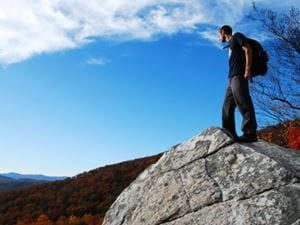
Reprinted from Open Heart, Open Mind by Tsoknyi Rinpoche. Courtesy of Harmony Books, a division of Random House, Inc.
Life is a challenge.
It’s also an opportunity.
Moment by moment, day by day, week by week, year by year, we face a variety of obstacles that test our strength, our faith, and our patience. Often, we watch, helplessly and hopelessly, as we become slaves to international corporations, slaves to our bosses, to our friends and families, and to time. But we don’t have to endure this bondage. We can set out on a path that allows us to reconnect with a tremendous inner potential for openness, warmth, and wisdom. Doing so, however, involves taking a fresh view of whatever circumstances we face, whether that involves chronic illness, childhood pain, relationship difficulties, or the loss of a job or a home. Although the message I was taught was inspired by a man who lived twenty-five hundred years ago, it remains as fresh today as it was back then.
What is that message?
Look at your life. Look at the ways in which you define who you are and what you’re capable of achieving. Look at your goals. Look at the pressures applied by the people around you and the culture in which you were raised. Look again. And again. Keep looking until you realize, within your own experience, that you’re so much more than who you believe you are. Keep looking until you discover the wondrous heart, the marvelous mind, that is the very basis of your being.
In the particular situation of crossing the glass bridge, described earlier, I took what I’d learned about looking quite seriously. Instead of taking some other route, I stepped back to look across the bridge and saw many people walking back and forth across it. Some were even hauling hand trucks loaded with heavy boxes. They appeared cheerful and unworried, just going about their business.
“Why then,” I wondered, “am I so scared?” After a few moments, the “why” hit me.
As a child, I’d taken a lot of risks, climbing to the tallest tree branches and scrambling onto mountain overhangs that even goats feared to climb. In the course of my adventures I’d taken my share of spills and the pain I’d felt had imprinted itself on my physical body. The physical pain generated a fearful emotional response to the possibility of falling. Taken together, these physical and emotional responses then crystallized into an idea that heights are dangerous.
In simple terms, a pattern had evolved: a tightly woven knot of physical, emotional, and conceptual reactions which, taken together, I’d accepted as fact, a bit of truth about who I was and the circumstances in which I found myself. The first time I’d tried to step onto the bridge, my pattern had taken over completely. I had become my fear. My fear had become me.
“Okay,” I told myself, “I can see a pattern here, but does this pattern apply right here and now?”
Of course not. The glass was solid. Other people were walking across the bridge. The pattern made no intellectual sense. I tried a second time to step onto the bridge—and failed again. Even though I knew intellectually that I wouldn’t fall, I still froze.
So I stepped back once more and began to look again at what was holding me back. After a few minutes’ consideration, I realized that the pattern of fear had become so deeply embedded in my thoughts, feelings, and physical sensations that I’d come to accept it as part of me, of who I believed I was and how I defined the world around me. This sort of identification is the “glue” that holds patterns together.


